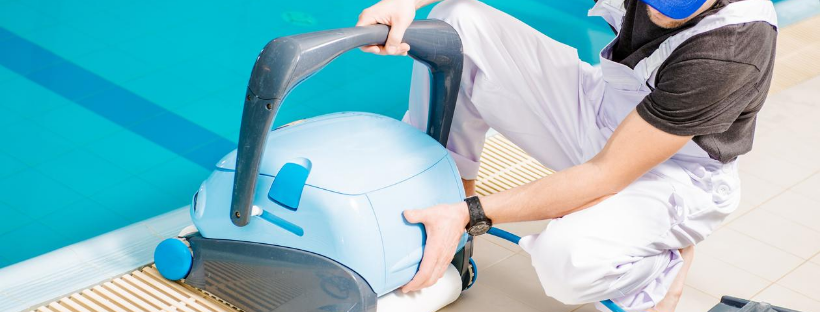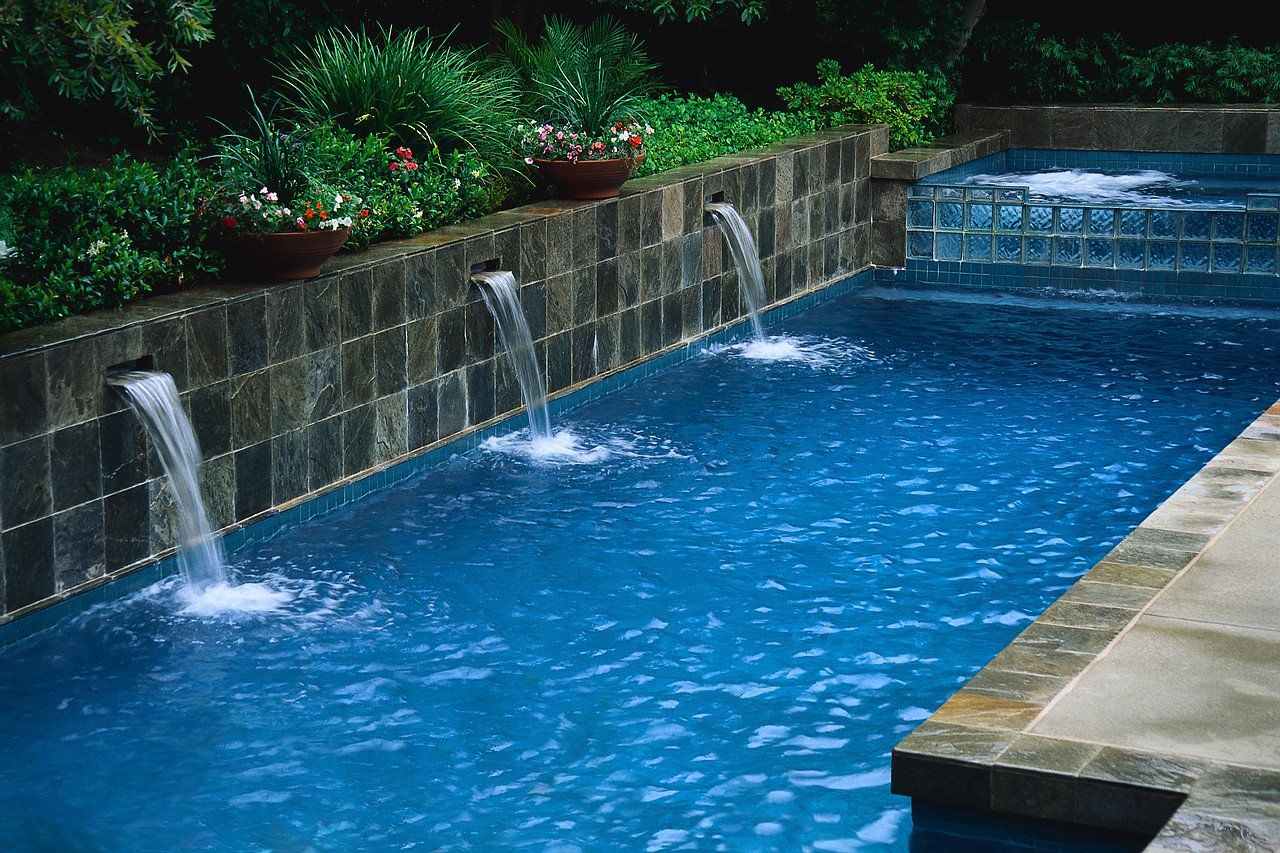HOW TO VACUUM AN IN-GROUND POOL EFFECTIVELY
A multi-tiered technique is required to keep an in-ground swimming pool bright and clean. The first stage is to maintain a proper pH and chlorine balance. Following that, the debris and other materials will be dealt with. The natural circulation of water through the filter removes small particulates suspended in the pool. Larger floating material, such as leaves, are caught in strainer baskets when the water goes through the skimmer or manually scooped out with a telescopic pole and a skimmer net. Dirt, debris, and other impurities that settle to the pool's bottom, on the other hand, usually need to be vacuumed. Many pool experts recommend vacuuming a home pool "whenever it needs it," rather than following a strict schedule because debris in a pool can vary dramatically from day to day based on usage.
Hardware
Pool vacuum heads are designed to connect to a universal snap fitting on the end of a telescopic pole that spans from 12 to 16 feet in length. A skimmer net, a pool brush, and a hook for recovering rafts and other flotation devices from the pool are usually attached to the same pole. Pool vacuum hoses are available in lengths ranging from 25 to 50 feet, with the shorter ones being the most popular for domestic pools. Each end of the hose usually has a swivelling 1.5-inch cuff that connects to the vacuum head and plugs into the skimmer vacuum port. A normal concrete in-ground pool's vacuum head is supported by a series of small plastic wheels that keep the vacuum head slightly elevated above the pool's floor.
Preparation
All vacuum parts must be purged of air before the cleaning process can commence. This is required to avoid air pockets invading the pool pump intake line, which would cause the pump to lose its prime. One end of the suction hose is hooked to the outlet fitting on the vacuum head after it has been secured to the telescoping pole, and the vacuum head is submerged to the bottom of the deepest area of the pool. When the vacuum head is on the bottom, push the remaining length of the vacuum hose beneath the water, starting where it emerges from the water, until the open end is submerged and the hose fills with water. To avoid allowing air into the hose after it has been filled, keep the open end underwater at all times.
Making Connections
The vacuum force generated by the pool circulation pump is used to create the pool vacuum. The suction mechanism of the pump draws water via the skimmer inlets, pumps it through the pool filter, and then returns it to the pool via the return lines. It's usually positioned in a sunken pit adjacent to the pool. The pool vacuum hose is threaded through the skimmer inlet with the open end submerged at all times, then plugged into the suction port at the bottom of the skimmer well once the skimmer lid and strainer basket have been removed. The pump's vacuum is diverted through the hose to the vacuum head at the pool's bottom in this design. If the pool has many skimmers, the vacuum line should be connected to the skimmer closest to the pool pump to get the most vacuum force. During vacuuming, if the pool plumbing includes designated intake valves for particular skimmers, all other skimmer valves should be closed.
Filter Settings
Smaller home pools' filter systems frequently have two-position "push-pull" valves that don't allow you to vacuum to waste. All the water in these pools passes through the filter. Multi-port filter valves, on the other hand, have six or seven settings, including two vacuuming options. The debris load in the pool determines the optimum setting on the multi-port filter valve. Vacuuming with the valve set to "Filter" sends vacuumed water and particles through the pool filter, then returns the filtered water to the pool. The "Filter" setting can be utilized when vacuuming a pool with only a normal quantity of dust and dirt on the bottom, or when the filter valve is a two-position type, as long as the pool filter is back washed after vacuuming to remove debris caught by the filter.
The multi-port valve should be set to "Waste" if the pool has a significant debris load, such as a pool that has been idle for a season or a pool with a serious algal epidemic. This option skips the filter and sends vacuumed water and debris straight to the sewer through the waste line. Vacuuming to the "Waste" setting avoids detritus from clogging the filter and/or polluting the filter media with significant volumes of live algae or chemical dispersants used to clear the water after algae have been destroyed. The pool water level will decline during vacuuming since vacuumed water does not return to the pool in the "Waste" setting. To prevent air from entering the skimmer inlet, add fresh water to the pool.
Vacuuming Techniques
Vacuuming is done by rolling the vacuum head across the bottom in back-and-forth rows, similar to mowing a lawn. Start vacuuming in the pool's deep end and work your way to the shallow end. To prevent churning up particles that could obscure the water and reduce visibility, roll the vacuum head carefully across the bottom. Switching off the pool pump will halt and release the vacuum force if the head becomes stuck to the pool, such as when moving the head over the edge of the elevated safety ledge integrated by the bottom of some swimming pools.
Larger debris, such as leaves and sticks, might gather in the pump strainer basket while vacuuming, reducing suction force. Vacuum can be restored by cleaning the strainer regularly. The filter pressure gauge should also be checked at intervals when vacuuming with the multiport valve set to "Filter." If the pressure exceeds the manufacturer's specifications, vacuuming should be stopped and the filter backwashed according to the filter model and type's instructions.
Finishing Up
Remove the vacuum head from the telescopic pole after vacuuming and drain any remaining water from the suction hose. Brush any residual algae or dirt off the pool's sides with a cleaning brush attached to the telescoping pole. To restore the entire circulation, debris in the pump strainer basket should be removed, and any valves to extra skimmers should be re-opened. If the multi-port valve was set to "Filter," the filter will require final backwashing. Return the multi-port valve to the "Filter" setting and add new water to raise the pool level if the pool was vacuumed with the "Waste" setting. The pool should be examined and chemicals supplied after the installation of freshwater to re-establish the right balance of chlorine and regulate the pH of the water.






